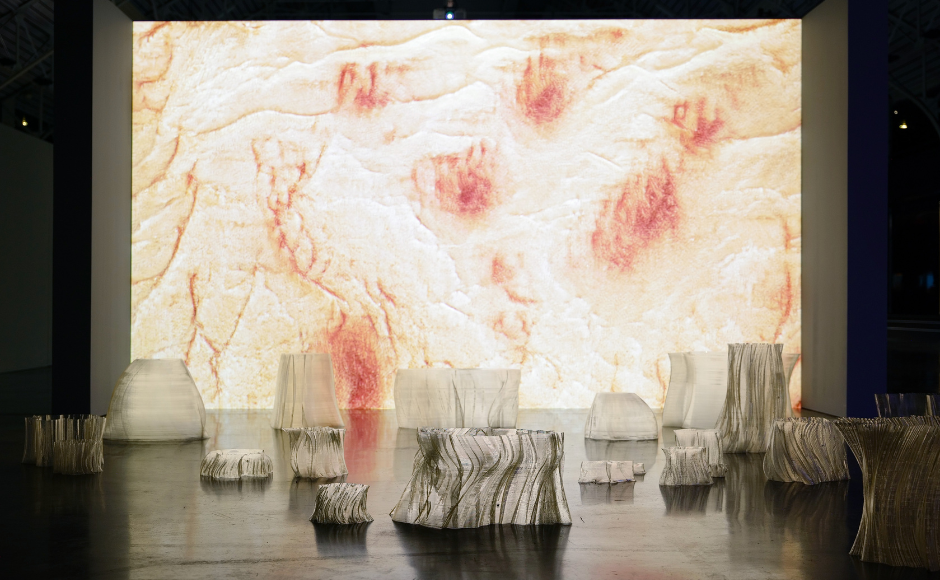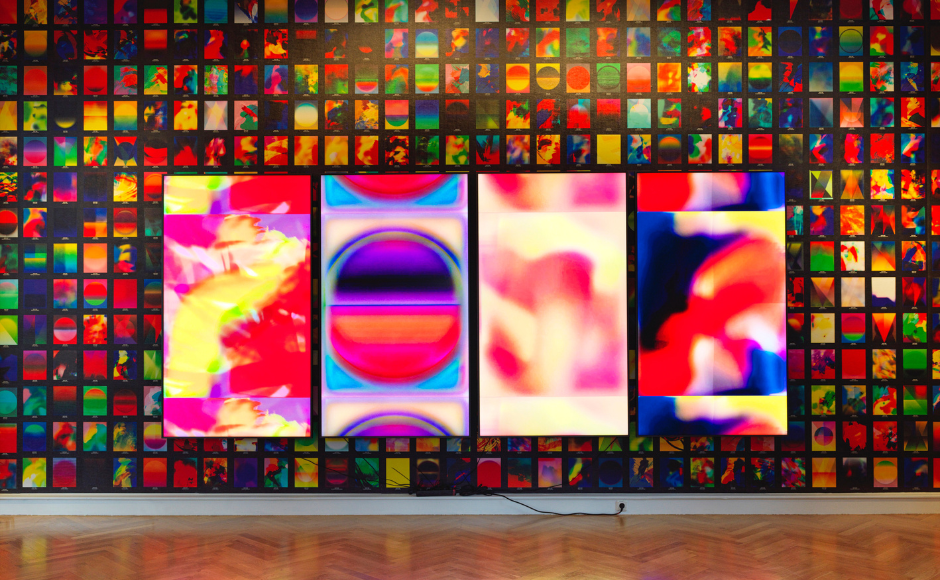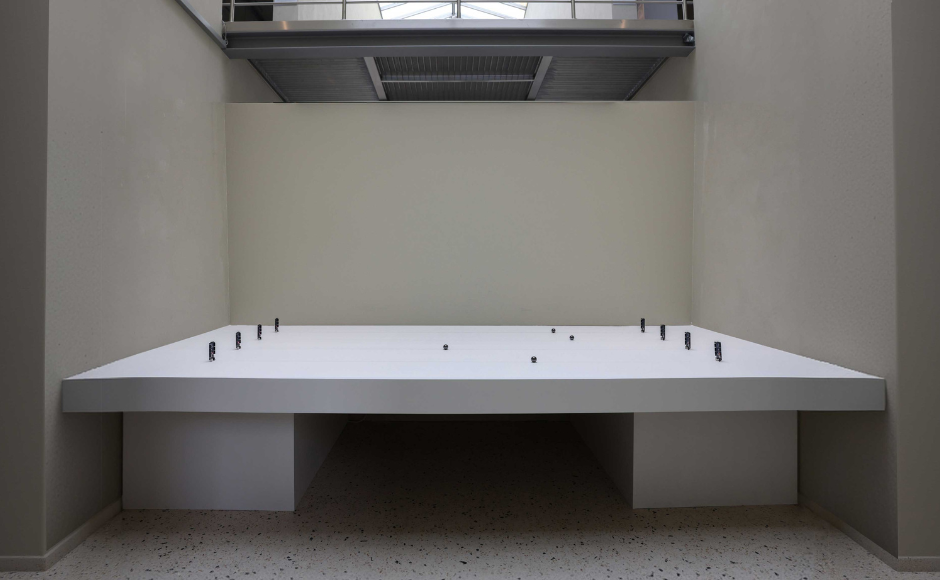



Justine Emard is a French artist who explores the new relationships that are developing between our lives and technology. By combining different image media – from photography to video and virtual reality – she situates her work at the intersection of neuroscience, objects, organic life and artificial intelligence. Her installations take as their starting point experiments in deep learning and dialogue between humans and machines. Winner of several residencies in Germany, the United States and Japan, guest artist-professor at the Fresnoy National Studio of Contemporary Arts in 2021 and 2024, she is also artistic director of the permanent exhibition at the French Pavilion at the 2025 World Expo in Osaka.
With Hyperphantasia, Justine Emard continues her research into the origins of images: from their appearance on cave walls at the dawn of humanity to their birth in our imagination and our brains. Using a scientific database from the Chauvet Pont-d'Arc cave and encephalographic recordings, a video wall comes to life and invites us to connect with the images buried deep within ourselves.

Justine Emard, « Hyperphantasia. Des origines de l’image » © Le Fresnoy - ADAGP, Paris, 2022
Born in 1984, Jonas Lund is a Swedish artist who creates works – paintings, sculptures, photographs, websites, performances – that take a critical look at contemporary networked systems and power structures. He designs performative works, often requiring audience participation, in which tasks are carried out according to algorithms or a set of rules. In this way, he explores issues raised by the increasing digitisation of our society. Jonas Lund holds a Master's degree from the Piet Zwart Institute in Rotterdam (2013) and a BFA from the Gerrit Rietveld Academy in Amsterdam (2009). He has had solo exhibitions at the Francisco Carolinum, Linz, the Photographers' Gallery (London), the König Galerie (Berlin), and Steve Turner (Los Angeles), and has participated in numerous group exhibitions, including at the Centre Pompidou, the Schinkel Pavillon in Berlin, and the ZKM in Karlsruhe.
MVP is a participatory algorithmic art project that critically examines how value is determined in the art world by creating a system where viewer engagement directly influences aesthetic outcomes. Comprising 512 individual, evolving digital paintings, the work sits at the intersection of pictorial tradition and computational art, transforming the typically static nature of painting into a dynamic process.

Jonas Lund, MVP (Most Valuable Painting), exhibition view of “Studio Visit: How to Make Art in the Age of Algorithms”, Francisco Carolinum, OÖ Art, Linz, 2022
Thomas Marcusson is a 44-year-old Swedish artist who explores the links between scientific theory and contemporary culture by combining technology with more traditional art forms such as sculpture, video and installations. After studying mathematics in Gothenburg, he obtained a Bachelor of Arts degree from the University of Technology in Sydney. He now works between Australia and Europe. Thomas Marcusson has received various awards and distinctions, and his works have been exhibited at Powerhouse FILE (Sao Paulo), Eyebeam Gallery (New York), Science Gallery (Melbourne, Dublin), The Museum (Ontario), Bow Arts (London), SIGGRAPH (Sydney), NTAA (Ghent), NordArt (Hamburg) and Experimenta (Australia). He has participated in several international artist residencies, including the Cité internationale des arts in Paris.
A.I. Ball is a kinetic installation that addresses the emergence of artificial intelligence and the competing forces shaping its development and impact. On a white surface, microchips compete with each other, taking turns solving mathematical problems that push a ball towards their opponent of equal strength in an endless game.

Thomas Marcusson, « A.I. Ball », exhibition at the New Technological Art Awards (NTAA 25) in Ghent © DR